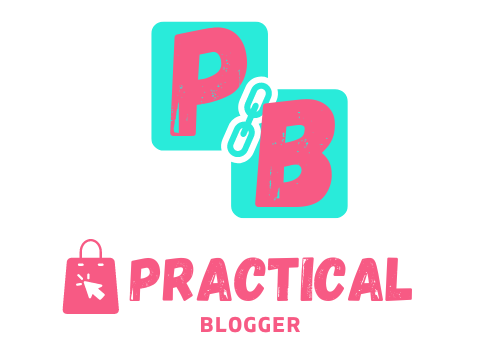Boost your website’s rankings with effective SEO link building. Discover proven strategies, expert tips, and best practices in this comprehensive guide. Subscribe to the Practical Blogger newsletter for more valuable insights!
- Mastering SEO Link Building: Your Ultimate Guide to Higher Rankings
- Chapter 1: Understanding SEO Link Building
- Chapter 2: Types of Backlinks
- Chapter 3: Building an Effective Link Building Strategy
- Chapter 4: Best Practices for SEO Link Building
- Chapter 5: Advanced Link Building Strategies
- Chapter 6: Measuring Link Building Success
- Chapter 7: Common Link Building Mistakes to Avoid
- Chapter 8: Link Building in 2023 and Beyond
- Conclusion
- Comparison Table: SEO Link Building Strategies
- FAQ: Common Questions About SEO Link Building
Mastering SEO Link Building: Your Ultimate Guide to Higher Rankings
In the ever-evolving landscape of digital marketing, SEO link building remains a cornerstone strategy for improving website visibility and search engine rankings. If you’re looking to elevate your website’s online presence, this comprehensive guide on SEO link building is a must-read. We’ll delve into the intricacies of link building, offering you expert insights, practical strategies, and best practices to help you navigate this dynamic terrain.
But before we jump into the nitty-gritty of link building, let’s begin with the basics.
Chapter 1: Understanding SEO Link Building
1.1 What is SEO Link Building?
SEO link building is a process that involves acquiring high-quality backlinks from other websites to your own. These backlinks act as “votes of confidence” for your site in the eyes of search engines like Google. The more authoritative and relevant the linking websites are, the better it is for your SEO efforts.
1.2 Why is Link Building Important for SEO?
Link building is crucial for SEO for several reasons:
a. Improved Search Engine Rankings: Quality backlinks can significantly enhance your website’s visibility in search engine results pages (SERPs).
b. Increased Organic Traffic: As your site climbs up the search rankings, you’re likely to see a surge in organic traffic, leading to more potential customers.
c. Authority and Trustworthiness: Backlinks from authoritative websites boost your website’s credibility and trustworthiness.
d. Better User Experience: High-quality backlinks often lead users to valuable, relevant content, enhancing their overall experience on your site.
e. Competitive Advantage: Effective link building can set you apart from your competitors and establish your brand as an industry authority.
Chapter 2: Types of Backlinks
2.1 Natural Backlinks
Natural backlinks are links that your website earns organically, without your active involvement in the link-building process. They often result from high-quality content that other websites find valuable and link to.
2.2 Manual Outreach Backlinks
Manual outreach backlinks are acquired through deliberate efforts. This involves reaching out to website owners, bloggers, and influencers to request backlinks. Effective outreach requires a well-crafted pitch and a compelling reason for them to link to your content.
2.3 Guest Post Backlinks
Guest posting is a strategy where you write articles for other websites in your niche, including a link back to your own site within the content. This not only builds backlinks but also establishes you as an industry expert.
2.4 Editorial Backlinks
Editorial backlinks are links that websites include naturally within their content because they find your content valuable. These are some of the most coveted backlinks in SEO.
2.5 Directory Backlinks
Directory backlinks come from web directories or listings. While some directories can provide value, be cautious about spammy or low-quality directories that could harm your SEO.
Chapter 3: Building an Effective Link Building Strategy
3.1 Conducting a Backlink Audit
Before you begin any link-building efforts, it’s essential to conduct a backlink audit. This involves assessing your existing backlinks to identify any low-quality or toxic links that might be harming your SEO. Tools like Ahrefs, Moz, and SEMrush can assist you in this process.
3.2 Competitor Analysis
Studying your competitors’ backlink profiles can provide valuable insights into their successful strategies. Identify which websites are linking to your competitors and consider reaching out to them for link-building opportunities.
3.3 Set Clear Goals
Define your link-building goals. Are you looking to improve your website’s domain authority, increase organic traffic, or target specific keywords? Having clear objectives will guide your link-building efforts.
3.4 Content Creation
High-quality content is the foundation of successful link building. Create informative, engaging, and shareable content that naturally attracts backlinks. Content formats like blog posts, infographics, videos, and case studies can all be effective.
3.5 Outreach and Relationship Building
When reaching out to other website owners for backlinks, personalize your outreach emails and build genuine relationships. Networking with bloggers and influencers in your niche can lead to valuable link-building opportunities.
Chapter 4: Best Practices for SEO Link Building
4.1 Focus on Quality Over Quantity
Quality always trumps quantity when it comes to backlinks. A few high-authority, relevant backlinks are more valuable than many low-quality ones. Aim for backlinks from reputable websites in your industry.
4.2 Diversify Your Anchor Text
Use a diverse range of anchor texts when building backlinks. This makes your link profile appear more natural to search engines. Avoid overusing exact-match anchor texts, as it may raise red flags.
4.3 Avoid Black Hat Techniques
Steer clear of black hat SEO techniques like buying links or engaging in link schemes. Such tactics can lead to penalties from search engines and harm your website’s reputation.
4.4 Keep an Eye on Nofollow Links
Not all backlinks are created equal. Some websites may use the “nofollow” attribute, which tells search engines not to follow the link. While these links don’t directly influence your SEO, they can still drive valuable traffic and provide brand exposure.
4.5 Monitor and Maintain Your Backlink Profile
Regularly monitor your backlink profile to ensure the quality of your links remains high. Disavow toxic links when necessary, and continue to build new, high-quality backlinks to keep your SEO efforts on track.
Chapter 5: Advanced Link Building Strategies
5.1 Broken Link Building
Identify broken links on authoritative websites in your niche. Reach out to the website owners, inform them of the broken link, and suggest your content as a replacement. This strategy often results in successful link placements.
5.2 Resource Link Building
Create comprehensive resources, such as guides, tutorials, or industry reports, and offer them for free on your website. Outreach to websites that could benefit from linking to your resource as a valuable reference.
5.3 HARO (Help a Reporter Out)
Join HARO to connect with journalists and bloggers looking for expert quotes and insights in your niche. By providing valuable input, you can secure backlinks when your contributions are published.
5.4 Social Media and Influencer Outreach
Leverage social media platforms to connect with influencers and industry leaders. Collaborate on content, interviews, or joint ventures that can lead to valuable backlinks and increased exposure.
Chapter 6: Measuring Link Building Success
6.1 Key Performance Indicators (KPIs)
Track the following KPIs to measure the success of your link-building efforts:
a. Domain Authority: An increase in domain authority indicates improved SEO.
b. Organic Traffic: Monitor traffic growth from organic search results.
c. Keyword Rankings: Track your website’s position for targeted keywords.
d. Referral Traffic: Analyze the traffic driven by your backlinks.
e. Conversion Rates: Measure the impact of your link-building efforts on conversions.
6.2 Tools for Monitoring
Use SEO tools like Google Analytics, Google Search Console, Ahrefs, Moz, and SEMrush to monitor and analyze your link-building performance regularly.
Chapter 7: Common Link Building Mistakes to Avoid
7.1 Ignoring Relevance
Backlinks from irrelevant websites can do more harm than good. Ensure that the websites you target are related to your niche and industry.
7.2 Over-Optimizing Anchor Text
Avoid excessive use of keyword-rich anchor texts. Aim for a natural, varied anchor text distribution.
7.3 Neglecting the Mobile Experience
With mobile usage on the rise, it’s crucial to ensure that your website and content are mobile-friendly. Google’s mobile-first indexing prioritizes mobile-optimized sites.
7.4 Neglecting Technical SEO
Link building is just one aspect of SEO. Don’t forget the technical side, such as optimizing site speed, fixing broken links, and ensuring mobile responsiveness.
Chapter 8: Link Building in 2023 and Beyond
8.1 Voice Search and AI
With the proliferation of voice-activated devices and AI-driven search results, optimizing for voice search and AI algorithms will become increasingly important for SEO link building.
8.2 Video and Visual Content
Visual content, including video, infographics, and images, will continue to play a significant role in link building. Creating engaging visual assets can attract more backlinks.
8.3 E-A-T (Expertise, Authoritativeness, Trustworthiness)
Google places a strong emphasis on E-A-T. Demonstrating expertise, authoritativeness, and trustworthiness in your niche is essential for attracting high-quality backlinks.
8.4 User Experience
A seamless and user-friendly website experience is crucial. Slow-loading sites or poor mobile optimization can deter both users and potential linking websites.
Conclusion
In the ever-evolving world of SEO link building, staying ahead of the curve is essential. By understanding the fundamentals, adopting effective strategies, and adhering to best practices, you can harness the power of link building to boost your website’s rankings, drive organic traffic, and establish your brand as an authority in your industry.
Remember, link building is an ongoing process that requires dedication, patience, and adaptability. Keep monitoring your performance, adjusting your strategies as needed, and always prioritize quality over quantity.
If you found this guide valuable, subscribe to the Practical Blogger newsletter for more expert insights and actionable tips to help you succeed in the world of digital marketing.
Subscribe to the Practical Blogger newsletter today and stay updated with the latest trends and strategies in SEO, content marketing, and more. Don’t miss out on valuable insights to boost your online presence!
Comparison Table: SEO Link Building Strategies
In this section, we’ll provide a concise comparison of the various SEO link building strategies discussed in the article. Each strategy has its strengths and considerations, and understanding the differences will help you make informed decisions about which approach to take in your SEO efforts.
| Strategy | Description | Pros | Cons |
| Natural Backlinks | Earned organically without active efforts. | – High quality – Builds trust and credibility | – Unpredictable – Slow growth |
| Manual Outreach | Actively reach out to site owners for links. | – Control over link placements – Targeted outreach | – Time-consuming – Response not guaranteed |
| Guest Post Backlinks | Contribute content to other sites with links. | – Builds authority – Establishes expertise | – Competitive – Guest posting guidelines |
| Editorial Backlinks | Links included naturally by other sites. | – High value – Organic endorsements | – Relies on content quality |
| Directory Backlinks | Links from web directories or listings. | – Easy to obtain – Quick growth | – Quality varies – Risk of spammy links |
Each strategy has its unique advantages and drawbacks. Your choice should align with your goals, resources, and the nature of your website. A balanced approach that incorporates multiple strategies often yields the best results.
FAQ: Common Questions About SEO Link Building
In this FAQ section, we address some of the most frequently asked questions about SEO link building, providing detailed answers and clarifications to help you better understand this essential digital marketing strategy.
The primary goal of SEO link building is to improve a website’s search engine rankings by acquiring high-quality backlinks from other websites. These backlinks serve as votes of confidence, signaling to search engines that your site is authoritative and credible, ultimately leading to higher visibility and increased organic traffic.
No, not all backlinks are equal. Quality matters more than quantity. Backlinks from authoritative and relevant websites carry more weight in improving your SEO. A few high-quality backlinks can have a more significant impact than numerous low-quality ones.
To identify toxic or low-quality backlinks, perform a backlink audit using tools like Ahrefs, Moz, or SEMrush. Look for spammy, irrelevant, or low-authority websites linking to your site. Disavow these links in Google Search Console to prevent them from harming your SEO.
Diversify your anchor text by using a mix of branded, generic, and exact-match anchor texts. Avoid over-optimizing with keyword-rich anchor texts, as this can appear unnatural to search engines. Keep it relevant to the content it links to.
No, buying backlinks is considered a black hat SEO practice and is against the guidelines of search engines like Google. Engaging in such practices can result in penalties and harm your website’s reputation. It’s essential to focus on ethical and white hat link-building strategies.
Regular monitoring of your backlink profile is crucial. Check it monthly to ensure the quality of your links remains high. Additionally, keep an eye on changes in your website’s rankings, organic traffic, and domain authority.
In 2023 and beyond, emerging trends in SEO link building include a focus on voice search and AI optimization, the importance of visual content, an emphasis on E-A-T (Expertise, Authoritativeness, Trustworthiness), and an increased emphasis on user experience (mobile optimization, site speed, etc.).
While link building is a critical component of SEO, it should be part of a comprehensive SEO strategy. Other factors like on-page optimization, technical SEO, content quality, and user experience also play vital roles in achieving SEO success. A holistic approach is recommended.
The timeline for seeing results from SEO link building can vary widely. It depends on factors such as your website’s current SEO status, the quality of your backlinks, and the competitiveness of your industry. Generally, it may take several months to a year to see significant improvements in rankings and traffic.
Yes, over-optimization in link building can be detrimental to your SEO efforts. Excessive use of exact-match anchor texts, obtaining too many backlinks too quickly, or relying solely on one type of link-building strategy can raise red flags with search engines. A natural and balanced approach is advisable.
These FAQs should provide you with a solid understanding of SEO link building and help address common queries that may arise as you navigate the world of digital marketing and search engine optimization.
Related SEO Guides from Practical Blogger:
- How To Get More Traffic to Your Website with Off-Page SEO
- The Beginner’s Guide to Off-Page SEO
- How to Hire an SEO Specialist and Get the Most Out of Your Investment
- The SEO Specialist’s Handbook: Your Key to Online Dominance
- Black Hat SEO Exposed: The Risks That Could Sink Your Website
- SEO Writing Mastery: Craft Content that Wows Both Readers and Google!
- SEO Content Writing Wizards: Craft Your Path to Online Stardom
- Boost Your Rankings with SEO Analysis: A Step-by-Step Guide
- Rise to the Top: The Ultimate Competitor Analysis SEO Strategy
- Stay Ahead in the SEO Game: The Ultimate SEO Keyword Analysis Handbook
- Boost Your Business: How Professional SEO Services Work Wonders













